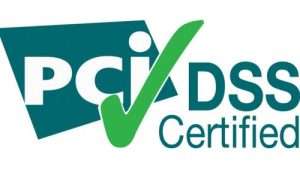Digital Transformation of Business – Ins and Outs

What is Digital transformation?
Digital transformation can apply to anything from IT to digital marketing, to digital innovation, or to the creation of new digital business processes.
In its broader sense, however, it covers any method by which information is transformed from one form to another, that’s the purpose of digital transformation.
In short, it covers any digital transformation that produces or facilitates new opportunities in business.
Approaches of Digital transformation
There are about four verticals of digital transformation; it involves data, technology, the process, and organizational change.
However, there are 3 pillars or main approaches of digital transformation which are the following
- Transformation of the operation process
- Transformation of the business model, and
- Transformation of the customer experience
All the approaches of digital transformation are to digitize information and make it available for playback or use in a number of ways, including online, mobile, or in a format that can be transferred or shared on multiple devices.
Digital Transformation Framework
A digital transformation framework is a blueprint for the organizational change in business operation, and it
can be implemented for many purposes.
A digital transformation framework is usually a tool that drives change in business operations.
Typically, when managers adopt digital transformation approaches, they do so as part of a strategy to achieve organizational change.
Advantages of Digitization
Digitization helps both small, medium, and large scale businesses to minimize the cost of business operations since businesses processes can be automated and manpower reduced.
By driving change through the adoption of digital technologies – whether those technologies are used to create new digital business models or to make existing business models more effective – managers effectively address their overall strategic goals.
Another way in which digital technologies can be applied to transform processes is through the development of digital tools or “whiteboards.”
Digital Transformation Tool
Digital whiteboards are digital tool stores that facilitate the sharing of information across an enterprise.
Digital whiteboards can be used for sharing documents, dashboards, screenshots, progress reports, user manuals, and interactive software programs.
Because they are available in a wide range of formats, including Microsoft Office 2020, a digital whiteboard makes it easy for all employees to take advantage of the tools and information that are associated with digital transformation processes.
Other examples of digital transformation frameworks examples include application frameworks and implementation guides.
These are frameworks and other technical support tools that help employees utilize digital technologies and use them in their daily work.
In some cases, these frameworks provide training guides and application programming interfaces (APIs) that help employees learn to work with digital technologies.
In other instances, the guides provide application programming interfaces (APIs) for digital transformation business models that can be implemented by the employees using the framework itself.
Both kinds of support make it easier for people to work with digital technologies and help them develop a digital transformation mindset.
Digital Transformation Examples
There are a variety of digital transformation examples. One example is the Open Source ERP software project that has been around for several years.
This software project includes components from several companies including SAP and Oracle.
This software package was designed to make it easy for ERP and enterprise resource planning (ERP) systems to integrate with one another.
Another popular digital transformation example involves integrating video conferencing and teleconferencing.
Technology experts say this method of communication has great advantages over more traditional methods of communication because the participants can see each other and can speak to each other in real time.
Should your Business be Digitized?
A good digital strategy will also allow users to share documents and other forms of content with other people who are not involved in the processes.
In the past, businesses did not buy into digital transformation framework initiatives because they didn’t believe they were needed or they weren’t certain that their current state of operations required it.
Now, businesses see that a digital strategy is a requirement if they want to continue to move towards their business goals.
If your organization doesn’t currently buy into these strategies, you need to take the initiative.
You can’t wait for others to adopt these strategies because, by the time they do, your company will likely have already adapted.
Challenges of Digital Transformation
The challenge for any manager adopting a digital transformation framework is to identify the appropriate transformations to make within their organization.
Doing so involves defining and describing processes, as well as how these processes will operate and what impact they will have on various aspects of the organization.
For example, certain processes may impact sales, while others may impact productivity.
The manager needs to ensure that they are able to align the processes with their strategic objectives.
In turn, they need to ensure that they are able to determine the appropriate metrics by which to evaluate the performance of digital transformation projects.
Conclusion
The goals of any digital transformation strategy are to improve productivity, reduce costs, and make processes more efficient.
In order for digital strategies to be effective, businesses need to take steps to automate processes and train employees on using new technologies.






